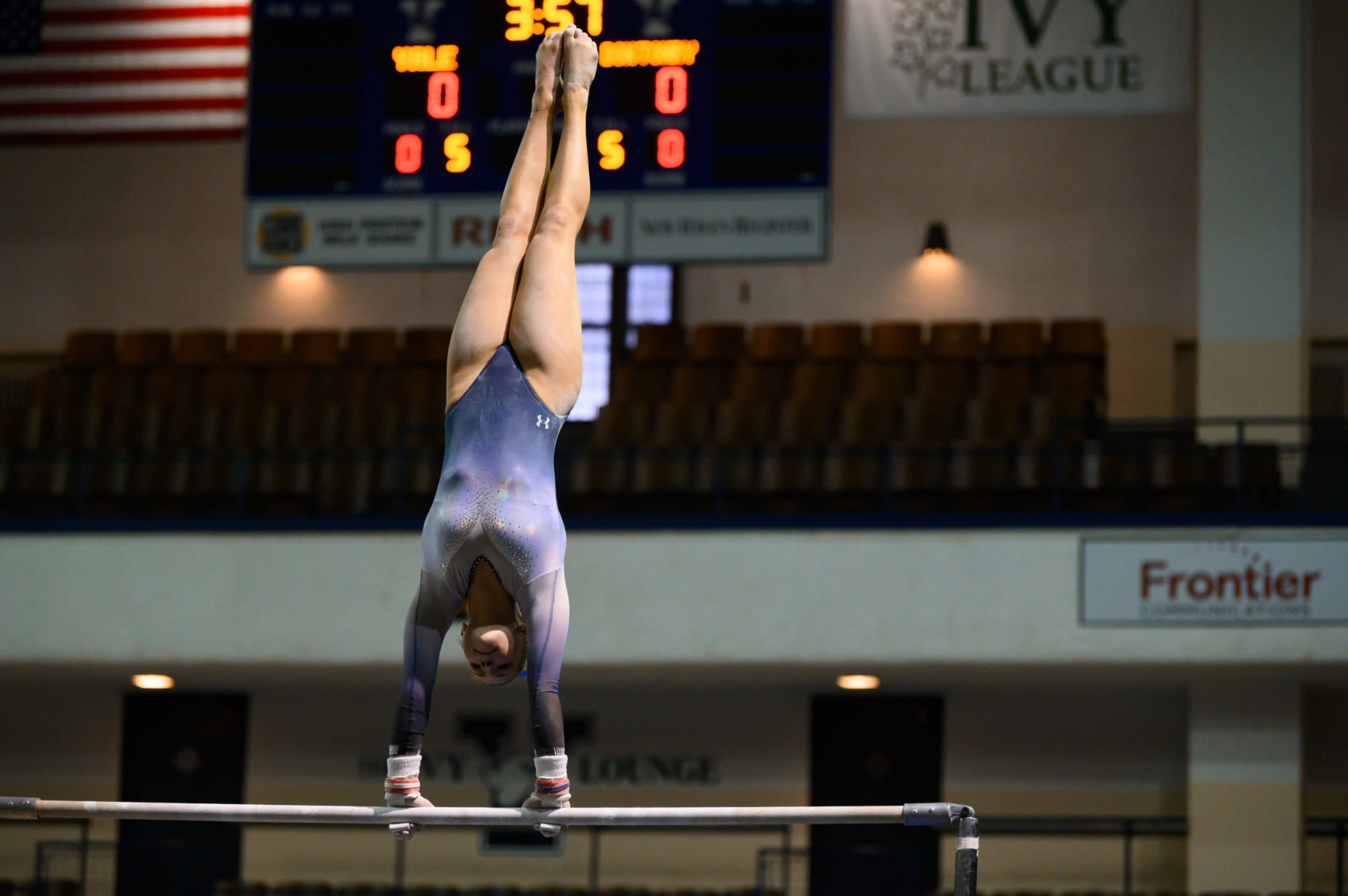GYMNASTICS: Bulldogs finish semester with strong team morale despite unusual training circumstances
With tight practice regulations imposed by the pandemic, the Yale gymnastics team has found ways to use their practice time effectively and instill a sense of normalcy through team bonding.

Lukas Flippo, Photo Editor
Despite the recent cancellation of winter athletic competition and the unusual semester, the Yale gymnastics team has made the most of their time and training together by prioritizing team culture.
Yale’s gymnasts have endured fluctuations in training regulations this past semester. For most of the semester, athletes cycled between Phase 0 and Phase I of the Ivy League’s reopening plan as the University dealt with two clusters, the first of which was found among members of the men’s hockey team. Aside from the six days varsity teams spent in Phase II, gymnasts were not able to engage in skills training when tighter restrictions were in place. Instead, they focused on strength and conditioning training as well as team bonding to create a “supportive and encouraging” environment in order to stay fit and motivated, according to gymnast Kendal Toy ’22.
“It was definitely a different situation for us because before college gymnastics, we are used to taking maybe one week off in the entire year,” captain Charlotte Cooperman ’21 said. “As much as we wanted to do gymnastics, I think just being able to be together in the gym was nice for us and have some sense of normalcy through that.”
Of the 17 team members, 11 were enrolled in-residence, with one student, Isabelle Lee ’22, on a leave of absence and all sophomores enrolled remotely. Although mostly all students eligible to enroll in residence chose to do so, compared to other teams like swimming & diving in which members were more geographically scattered, Lindsay Chia ’22 said it was “very noticeable” that “a big chunk of the team was missing with the sophomores training remotely.”

In a normal year, the team practices for three hours a day with a mix of conditioning, skills and strength training. But this fall, as the semester progressed, the team was able to practice for one hour a day in their gym under Phase I and two hours a day during the week Yale spent in Phase II. Because skills training for gymnastics requires multiple teammates to use equipment simultaneously to ensure injury prevention, the team chose to focus on strength and conditioning under Phase I and allot the additional hour to skills training under Phase II, according to Chia.
Chia said that the team “cherishes the time that [they] do get [in the gym],” and they use that time to remind each other of “why our sport is so fun, pushing each other to continue to stay fit and keep up.”
The gymnastics competition season runs from January through April — a slightly shifted timeline from other winter sports. Ordinarily, the team would arrive on campus on New Year’s Eve to prepare for the upcoming season and bond. But with this year’s season canceled, Cooperman said she plans to focus on academic and individual goal setting, finding ways for all members to stay in shape and having social gatherings over Zoom.
Cooperman said that focus on team morale throughout this past semester has helped keep motivation up among team members, especially when gymnastics can be a “very individual sport until you get to college.” From socially-distant picnics for those on campus to pen-pal groups with the off-campus sophomores to class challenges, the Bulldogs found ways to keep all members involved.
“The worst part was probably not knowing what you’re training for,” Cooperman said. “So I think it’s important to keep up that team aspect in a friendly, competitive nature.”
According to Cooperman, practices for those on campus would run by dividing the team into groups of five or six members, each with students from several class years. She said that by splitting the groups in this way, “[first years] could see how we do things in the gym and what our attitude and mentality is day to day.”
Depending on the availability of team members, sometimes up to 10 members were able to be in the gym at once.
“Normally, we line up at the beginning of practice and we do a team huddle and cheer at the end,” Cooperman said. “We still managed to do all of that, just in a socially-distanced way.”
Gymnasts said training from home during the long winter break ahead will be dependent on personal living situations. Toy, for example, said she does not feel very safe in her gym in her hometown due to the pandemic, and therefore does not plan on engaging in skills training over the break. She added that the reliance on equipment makes it nearly impossible to supplement this form of training elsewhere, such as within a dorm room or at home. Chia, meanwhile, said she hopes that the team will have virtual workout sessions so that they can “keep each other motivated.”
Last year, the Bulldogs won four of their nine meets prior to the season’s abrupt end.
Samhitha Josyula | samhitha.josyula@yale.edu







